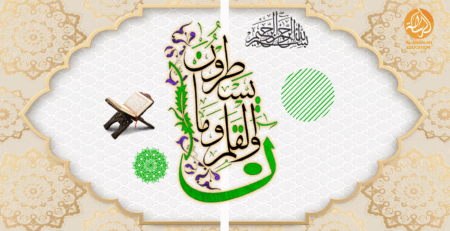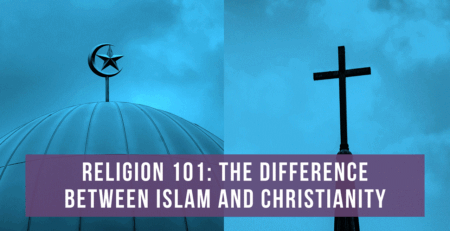Positive Impact of Islamic Art on Society
Islamic art is not just about aesthetics; it embodies the essence of a rich cultural heritage and serves as a profound expression of faith and identity. Through its intricate designs, masterful craftsmanship, and spiritual symbolism, Islamic art has left an indelible mark on societies across the globe.
Introduction to Islamic Art
Islamic art encompasses a wide array of artistic forms, including architecture, calligraphy, painting, and decorative arts. Rooted in the teachings of Islam, it reflects a deep reverence for divine beauty and the pursuit of perfection. From the geometric patterns adorning mosques to the delicate script of Quranic verses, Islamic art is characterized by its meticulous attention to detail and profound spiritual symbolism.
Cultural Significance of Islamic Art
Historical Context
Islamic art emerged in the 7th century with the rise of Islam and quickly flourished under the patronage of caliphs and rulers. It drew inspiration from diverse cultural traditions, including Persian, Byzantine, and Indian influences, resulting in a rich tapestry of artistic expression.
Artistic Elements
Key elements of Islamic art include geometric patterns, arabesques, floral motifs, and calligraphy. These elements not only serve decorative purposes but also convey deeper philosophical and spiritual meanings, reflecting the unity and harmony inherent in Islamic belief.
Impact of Islamic Art on Society
Cultural Enrichment
Islamic art has enriched cultures worldwide by introducing unique styles and techniques. Its influence can be seen in the art and architecture of regions as diverse as Spain, India, and West Africa, where Islamic motifs and designs have left an enduring legacy.
Architectural Marvels
Islamic architecture is renowned for its grandeur and elegance, with mosques, palaces, and madrasas serving as architectural masterpieces. Structures like the Hagia Sophia in Turkey and the Alhambra in Spain exemplify the exquisite beauty and technical prowess of Islamic architects.
Media and Communication
Islamic calligraphy, with its fluid lines and intricate forms, has been instrumental in conveying religious texts and poetry. It has also inspired various forms of media and communication, from illuminated manuscripts to contemporary digital art, serving as a bridge between past and present.
Promotion of Unity
Through its emphasis on unity and harmony, Islamic art has fostered a sense of community and belonging among diverse populations. Whether through shared artistic traditions or collective experiences of beauty, Islamic art has served as a unifying force that transcends cultural and geographical boundaries.
Political Symbolism
Islamic art has often been intertwined with political power, serving as a visual representation of authority and legitimacy. Monuments like the Taj Mahal in India and the Dome of the Rock in Jerusalem not only showcase architectural prowess but also convey political messages of strength and cultural identity.
Influence Beyond the Islamic World
Global Inspiration
Islamic art has inspired artists and designers worldwide, influencing artistic movements such as Art Nouveau and Bauhaus. Its emphasis on geometric patterns and floral motifs can be seen in everything from textiles to contemporary architecture.
Cross-Cultural Exchange
Islamic art has facilitated cross-cultural exchange and dialogue, fostering a deeper understanding and appreciation of diverse artistic traditions. Through trade routes and diplomatic exchanges, Islamic art has influenced the artistic practices of regions as far-flung as Europe, Asia, and Africa.
Conclusion
In conclusion, the positive impact of Islamic art on society is profound and far-reaching. From its cultural enrichment and architectural marvels to its promotion of unity and political symbolism, Islamic art continues to inspire and captivate audiences worldwide. Its influence transcends boundaries, fostering dialogue and understanding across diverse cultures and civilizations.
FAQs
- What are some famous examples of Islamic architecture?
- Some famous examples include the Taj Mahal in India, the Alhambra in Spain, and the Dome of the Rock in Jerusalem.
- How has Islamic calligraphy influenced art and design?
- Islamic calligraphy has inspired various forms of media and communication, from illuminated manuscripts to contemporary digital art, serving as a bridge between past and present.
- What is the significance of geometric patterns in Islamic art?
- Geometric patterns in Islamic art symbolize the unity and harmony inherent in Islamic belief, reflecting the interconnectedness of all things.
- How has Islamic art influenced global artistic movements?
- Islamic art has inspired artistic movements such as Art Nouveau and Bauhaus, influencing everything from textiles to contemporary architecture.
- Why is Islamic art considered a unifying force?
- Islamic art promotes unity and harmony through its emphasis on shared artistic traditions and collective experiences of beauty, transcending cultural and geographical boundaries.










Leave a Reply